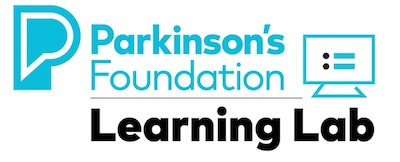Part 1: What is Parkinson's and How is it Diagnosed?
Learning Objectives:
- Describe idiopathic Parkinson's disease and differential diagnosis
- Identify health statistics associated with Parkinson's disease
- Discuss the pathophysiology of Parkinson's disease
- Describe how a diagnosis of Parkinson's disease is made
- Identify motor and non-motor symptoms of Parkinson's disease across the course of Parkinson's disease
.
Part 2: Motor Symptoms and Implications
Learning Objectives:
- Describe swallowing dysfunction in Parkinson's disease
- Recognize importance of appropriate nursing interventions and team referrals
- Discuss issues with weight loss across the trajectory of Parkinson's disease
- Recognize cardinal symptoms of Parkinson's disease
- Identify secondary motor features in Parkinson's disease
- Name and define motor complications
- Discuss factors that impact motor function
- Discuss determinants of quality of life, with no respect to motor function
- Identify nursing and PT, OT, and SLP interventions used to minimize impact of motor symptoms on quality of life
Part 3: Non Motor Symptoms and Challenges
Learning Objectives
- Describe potential problems with the autonomic nervous system, fatigue, and sleep changes in Parkinson's disease
- List three strategies for each category
- Identify the role of the nurse in assessment and management of non motor symptoms in Parkinson's disease
- Discuss caregiver burden with non motor symptoms in all stages of Parkinson's disease
- Describe problems, overview of treatment; including pharma and non-pharmalogic treatment of non-motor symptoms of Parkinson's
- Describe the changes in neuropsychiatric status; cognition, mood, and psychosis
